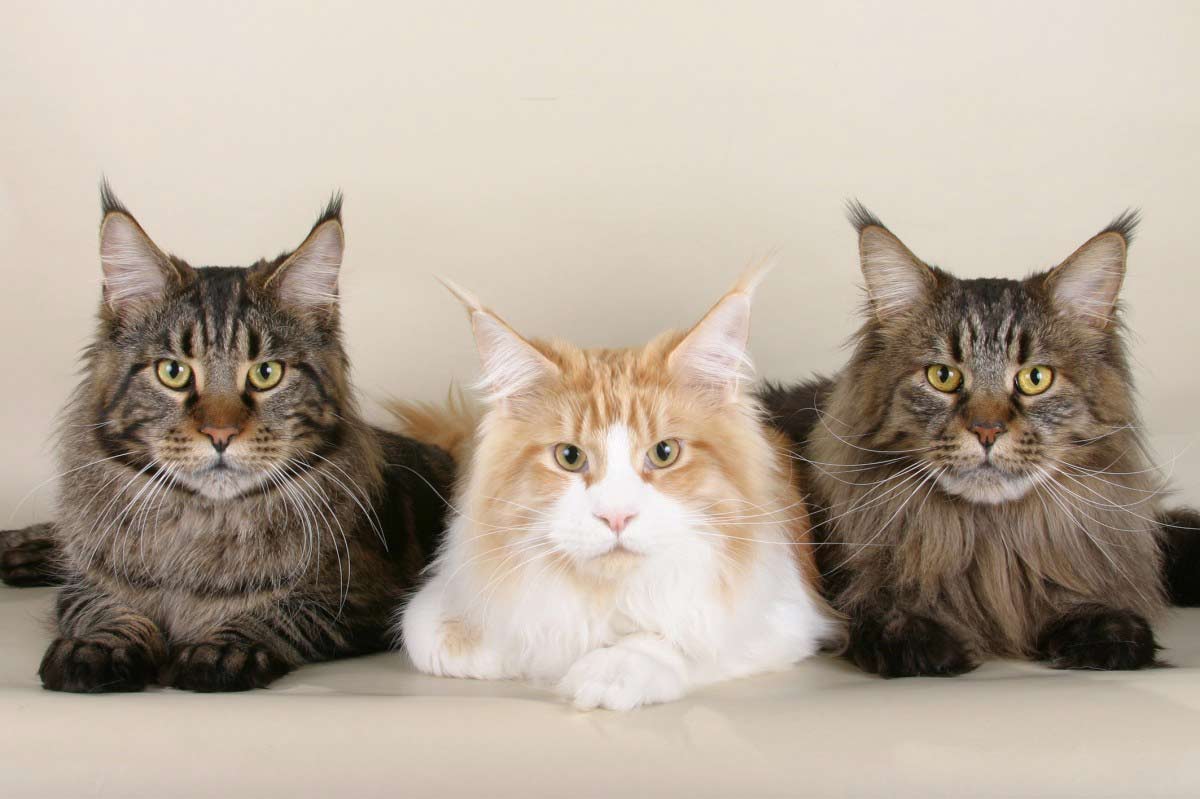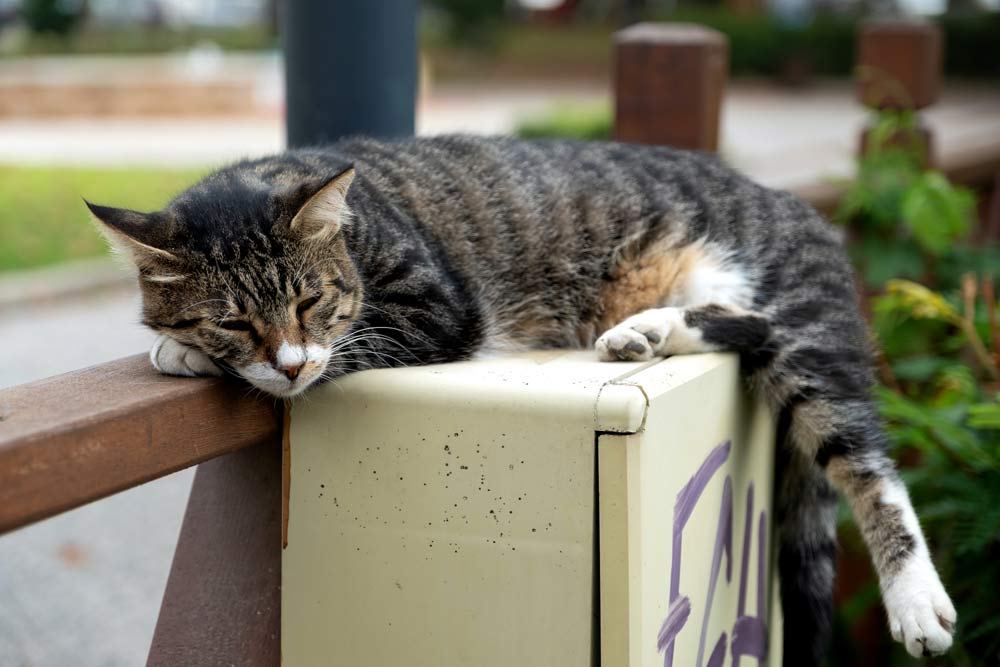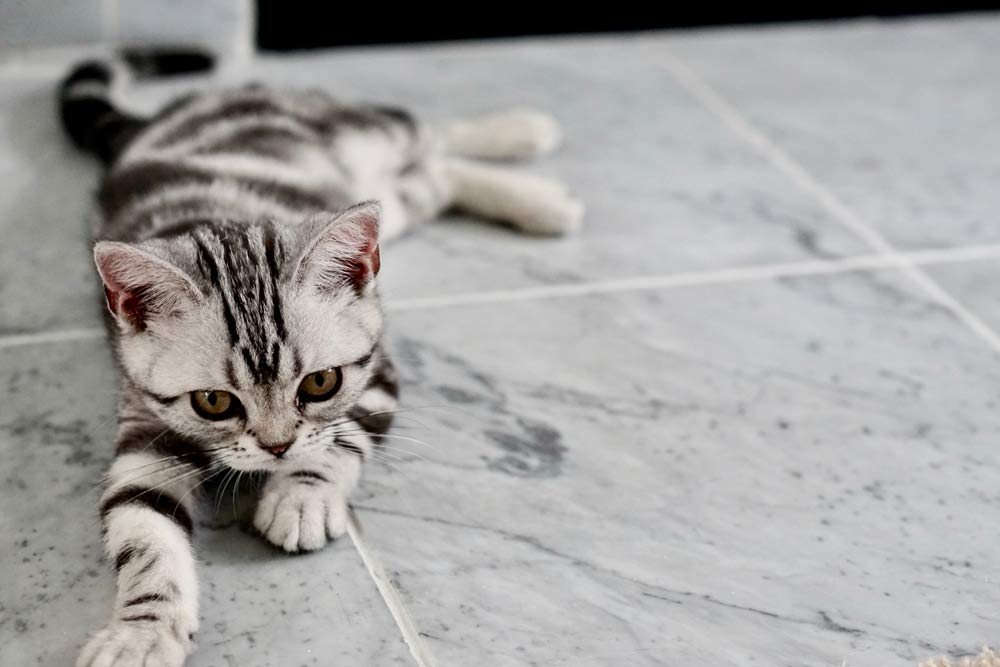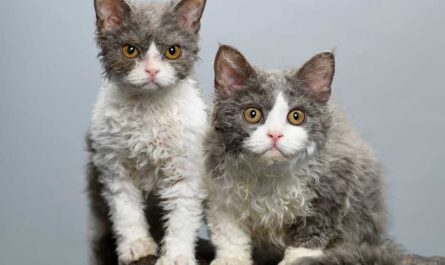Cat territory marking is a common feline behavior. To the uninitiated observer, the antics of our feline companions may appear perplexing, even exasperating. Yet, delving into the enigmatic world of cat behavior unravels a tapestry of communication strategies, notably, the intricate art of marking territory. For those sharing their homes with these enigmatic creatures, a grasp of fundamental feline behavior, particularly the nuances of scent marking, becomes indispensable. Do cats mark their territory? Lets explore.
The Intricacies of Feline Quirks
From being a genuine, tangible trip hazard as they elegantly weave around your feet, your feline companion’s movements can at times seem almost choreographed, leaving you bewildered and, on occasion, genuinely concerned for your own balance. These seemingly acrobatic displays may perplex the uninitiated, but when examined through the lens of feline affection, a deeper layer of understanding emerges. The cat’s sinuous path around your legs, although disruptive, is often a physical manifestation of their desire to be close to you, a rhythmic dance of companionship that, while occasionally hazardous, speaks volumes about their attachment.
Blanket Snagging Ballet: Decoding Feline Kneading
Picture this: you’ve settled into the warmth of your favorite chair, cocooned in the soft embrace of your coziest blanket. Suddenly, without warning, your feline friend begins a curious ritual—kneading. This instinctual behavior, often accompanied by a rhythmic purring, may seem perplexing, if not downright irritating. However, beneath the surface lies a profound expression of feline emotion. Kneading, rooted in kittenhood when they stimulated milk flow from their mother, is a nostalgic act, a reflection of comfort and security. So, while your blanket may suffer occasional collateral damage, understanding the emotional depth behind this seemingly mischievous act transforms frustration into an appreciation for the enduring bond between human and feline.
Love, Unconventional: Feline Affection Explored
Cat behavior, with its peculiar nuances, can indeed be a conundrum for even the most seasoned pet owner. Yet, the seemingly baffling actions, when deciphered, unveil a profound truth—cats express love in their own, unique language. The deliberate weaving around your legs, the artful ballet of blanket kneading; these are not mere quirks but rather profound declarations of attachment. As you navigate the labyrinth of feline idiosyncrasies, consider them not as nuisances but rather as endearing expressions of love for both you and the shared abode. Embrace the mystery, for within it lies the intricate tapestry of feline affection, woven with threads of curiosity, playfulness, and unwavering devotion.
Scent Marking Strategies: Pheromonal Prowess Unleashed
Cats, those enigmatic felines, are astute communicators employing a sophisticated array of scent glands placed strategically on their countenance, physique, and paws. With a finesse that borders on artistry, they unleash pheromones, these invisible molecular messengers, each a unique olfactory signature that speaks volumes in the silent language of the animal kingdom. This symphony of scent-marking techniques, a ballet of biological communication, unveils their territorial intentions. From the overt and conspicuous act of scratching, etching their presence into surfaces, to the more covert but potent methods such as urine spraying and the secretive release of anal gland secretions, every gesture is a declaration etched in scent.
How does a male cat mark its territory?
The intricacies of feline territorial behavior unfurl when considering the proclivity of male cats to delineate their domain through the distinct act of urine spraying. This behavioral tendency becomes notably pronounced in unneutered males, as their urine assumes an olfactory potency that transcends that of their neutered counterparts. The raison d’être behind this aromatic exhibition lies in the primal instinct to attract potential mates. In the arcane world of tomcats, urine becomes an eloquent and unmistakable language of allure, a fragrant semaphore that echoes through the tapestry of the animal kingdom.
Do indoor cats mark their territory?
The myth that the demure interiors shield domestic cats from the primal dance of territorial marking is promptly dispelled. Even within the confines of a cozy abode, indoor cats choreograph their territorial ballet with a nuanced repertoire that extends beyond the pungency of urine. The canvas upon which they express their territorial identity is painted with behaviors such as face rubbing, bunting, and kneading. Each of these actions serves as a brushstroke, imprinting the familiar milieu with the signature scent of the feline resident. However, the hallowed sanctity of indoor spaces may be disrupted if unneutered, stressed, or anxious cats resort to the less refined art of spraying. In such instances, the prudent course involves contemplating the merits of neutering, a decision best navigated with the sagacious counsel of a veterinary confidante.
Indoor cats and territorial dynamics: A Fragrant Symphony
Within the walls of domesticity, where plush sofas and sunlit windowsills coalesce, indoor cats orchestrate a symphony of territorial identity. Their conduct transcends the limitations of spatial confinement. Face rubbing becomes an intimate sonnet, a tactile declaration that marks furniture and corners alike with the essence of familiarity. The art of bunting, a gentle nuzzle, assumes the role of a tactile brush, daubing the environment with the palette of their presence. Kneading, a rhythmic dance of paws, imprints the territory with a cadence that transcends the mundane.
Yet, within this fragrant symphony, there lingers the potential dissonance of urine spraying, an overture that might disrupt the harmony if triggered by the specters of stress, anxiety, or unneutered impulses. In these moments, the guidance of a vigilant veterinarian becomes a harmonious note, offering the key to restoring equilibrium within the feline domain.
How Do Cats Mark Their Territory?
Decoding the rich tapestry of feline territorial communication unveils a nuanced world where seemingly mundane actions become eloquent expressions of ownership, affiliation, and emotional states. Observing these behaviors with newfound appreciation adds depth to the mysterious bond between humans and their feline counterparts.
1. Pooping: Anal Glands as Scentful Signposts
Venturing into the less glamorous realms of feline behavior, we confront a peculiar yet intricate communication system encoded within the unassuming act of defecation. While fecal matter may seem mundane to human sensibilities, for a cat, it unfolds as a nuanced expression of identity, a visceral autobiography inscribed in scent. Beyond the mere evacuation of waste, a cat’s depositing of feces becomes a strategic release of information. Gender, age, health, and even social standing are woven into the aromatic tapestry left behind, creating an olfactory breadcrumb trail that tells a tale decipherable only to the keenest of noses.
2. Face Rubbing: An Intimate Olfactory Embrace
In the delicate choreography of feline interaction, the congregation of scent glands on a cat’s face elevates seemingly affectionate gestures to the realm of territorial declarations. The act of gently rubbing their face against corners, furniture, or fences is far more than a casual display of fondness. It is a deliberate and intimate olfactory embrace, a proclamation of ownership over spaces saturated with familiarity, safety, and contentment. Each subtle motion, seemingly innocuous to the untrained eye, is laden with meaning, a tactile and aromatic assertion of a cat’s place in its world.
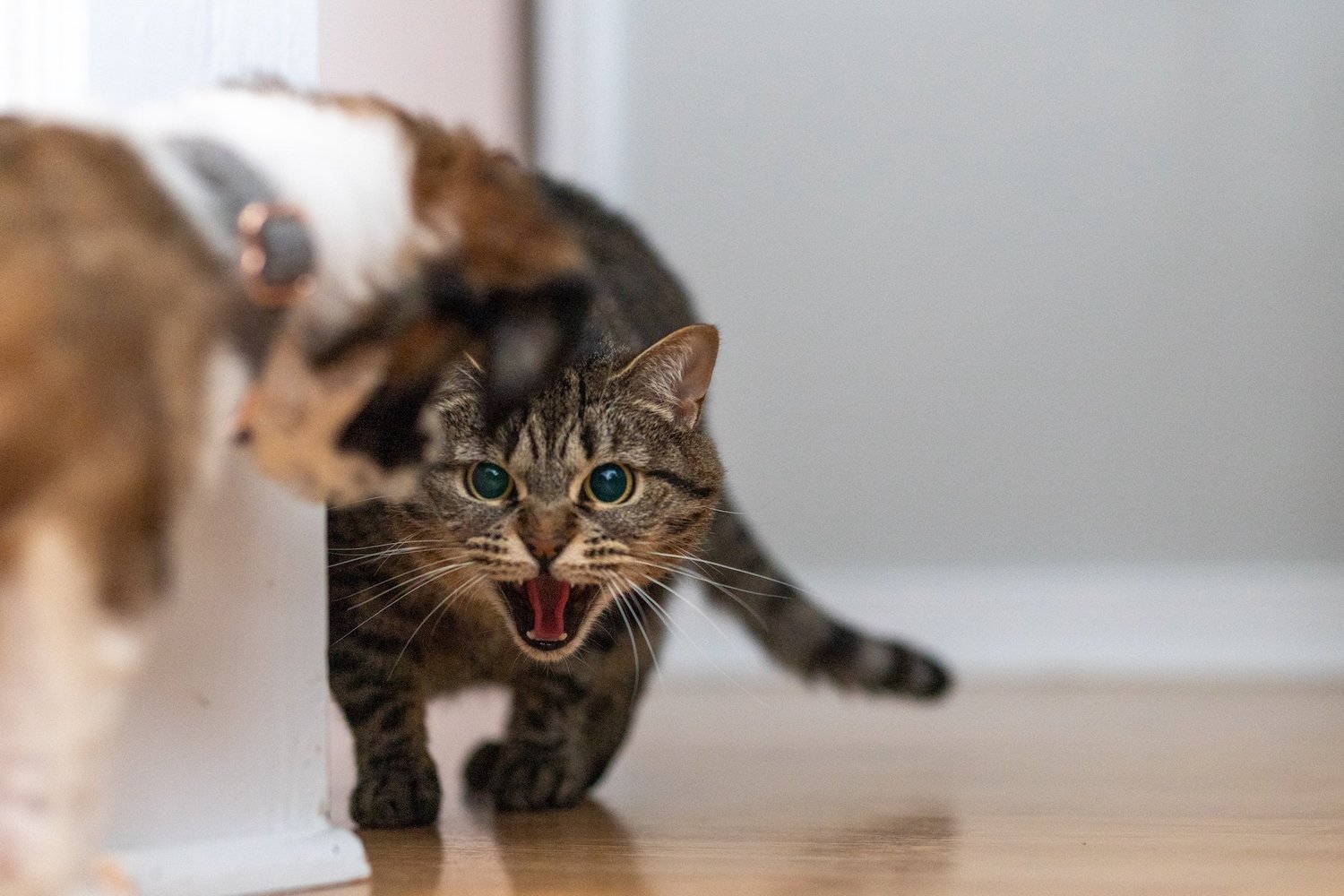
3. Urine Spraying: Olfactory Canvases and Behavioral Insights
Urine spraying, a behavior transcending mere elimination, is an orchestration of olfactory artistry on vertical surfaces. While both genders partake in this aromatic exhibition, it becomes more pronounced in non-neutered cats. Beyond territorial claims, spraying unveils a cat’s emotional canvas, echoing stress, hormonal impulses, or disruptions to their familiar milieu.
4. Rolling: The Ground as a Scent-Infused Canvas
Amidst moments of unbridled feline joy or instinctual territorial fervor, cats seamlessly transform outdoor landscapes into aromatic masterpieces through the art of rolling. With meticulous precision, they engage in this seemingly carefree act, strategically placing their unique scent on every conceivable surface, be it the sun-kissed patio, the earthy embrace of dirt, or even the stoop of your doorstep. Each joyful revolution becomes a deliberate marking ritual, an olfactory signature etched into the environment, a tangible and fragrant assertion of possession.
5. Rubbing: Purr-suasive Territorial Declarations
Beyond the horizontal symphony of rolling, cats elevate their territorial overture to an intricate ballet of scent dissemination through the persuasive act of rubbing. The garden wall, once a mere pathway, transforms into a stage for a choreographed performance. With sinuous grace, feline bodies lean into surfaces, leaving behind a trace of their essence—a territorial declaration that resonates through olfactory cues. This rhythmic dance is a purr-suasive communication, an unmistakable proclamation that the domain, every nook and cranny, is unequivocally and indisputably theirs.
6. Scratching: The Multifaceted Manifestation of Territoriality
Within the intricate anatomy of a cat’s paws lie carefully positioned scent glands, strategically encircling their nails and paw pads. The seemingly mundane act of scratching transcends its surface purpose, evolving into a multifaceted manifestation of territoriality. Whether it’s the vertical stretch of a scratching post or the horizontal canvas of furniture, this ritualistic behavior serves a dual purpose. Sharp claws are maintained, and simultaneously, the cat imprints their scent onto surfaces—a dynamic display that is both visual and olfactory. It is a proclamation etched into the very fabric of their environment, an assertion of presence that transcends the physical act into a symbolic dance of ownership.
At What Age Do Male Cats Start Spraying?
The enigmatic realm of feline behavior unfolds with an intricate dance of individuality, where each cat treads its own unique path. Amid this diversity, a notable milestone often looms as male cats tiptoe into the realm of spraying, a behavior intricately interwoven with their journey into sexual maturity. The curtain rises on this olfactory performance around the age of 6 months, an epoch marked by the gradual ascension of testosterone levels, casting a shadow over the previously unblemished canvas of kittenhood.
Neutering and the Spray Dilemma:
A pivotal juncture in the narrative of spraying lies in the act of neutering, a surgical symphony that, if conducted at a tender age, orchestrates a diminuendo in the proclivity for this behavior. Neutering, by quelling the surge of testosterone, becomes a formidable deterrent, obliterating the motivation that propels male cats toward the quest for a mate. Yet, lurking within the behavioral labyrinth are alternate motives for spraying, unfettered by the neutering divide. It is imperative to recognize that the complex tapestry of feline behavior may thread itself into inappropriate urination, a potential harbinger of underlying medical conditions, such as the specter of feline lower urinary tract disease.
Post-Neutering Dynamics:
The castration tableau, while substantially tempering the proclivity for spraying, does not entirely erase the prospect. Beyond the surgical intervention, the behavioral tapestry remains susceptible to the warp and weft of stress or environmental vicissitudes. The interplay of these factors, though vexing to disentangle, echoes the refrain that spraying, whether a post-neutering lament or a lingering ode to intact virility, might not be the sole conduit of olfactory expression. Even in the wake of neutering, the male cat, a maestro of scent, continues to choreograph the dissemination of his olfactory signature through rituals of rubbing, rolling, or the gentle ballet of headbutting.
Navigating the Olfactory Symphony:
In the face of the olfactory symphony, should the discord of spraying issues reverberate through the corridors of your feline companionship, the solace lies in the wisdom of veterinary counsel or the nuanced expertise of a certified animal behaviorist. The collaborative endeavor between caretaker and expert becomes the compass guiding one through the labyrinth of feline behavior, where understanding and resolution coalesce to create a harmonious melody in the odyssey of cat ownership.
Do cats mark their territory on humans?
In unraveling the intricate language of feline affection, cat marking its territory, each of these behaviors becomes a brushstroke on the canvas of your shared bond, an aromatic symphony that transcends the limitations of verbal expression.
1. Bunting: A Forehead Symphony of Trust and Affection
Engaging in a ballet of affection, your cat, with a gentle headbutt, engages in a behavior known as bunting. Far from an act of aggression, this seemingly peculiar ritual is an intricate dance of trust and security. The cat, equipped with a cluster of scent glands on its forehead, leaves behind an olfactory imprint when bestowing a headbutt upon you. In essence, this is a colossal compliment, a testament to the profound trust your feline companion places in you.
2. Kneading: A Paw-Symphony of Cozy Affection
Picture this: you settle onto the sofa, drink in hand, and your cat, instead of immediately claiming your lap, indulges in a peculiar ritual of kneading and padding. Annoying as it may seem, this act serves a purpose beyond simple irritation. Cats, equipped with scent glands in their paws, release their unique fragrance while kneading. This seemingly inconvenient prelude ensures that their chosen spot resonates with the comforting aroma of familiarity, a gesture aimed at enhancing their sense of safety and reassurance. Cat accessories on Amazon
3. Leg Rubbing: Pheromone-Infused Declarations of Territory
Upon your arrival home or in moments of culinary anticipation, does your cat weave through your legs, leaving behind a trail of scent? This seemingly territorial display is, in fact, a strategic transfer of pheromones. As your cat brushes against your legs or clothing, it’s not merely a physical acknowledgment but a deliberate marking of territory. This dual-purpose act not only communicates to other felines that you’re off-limits but also instills in your cat a sense of safety and reassurance in their shared environment.
4. Face Rubbing: Pheromone-Painted Expressions of Love
Much like an artist applying brushstrokes to a canvas, your cat employs face rubbing as a means of adorning you with their unique scent. The cheeks of a cat house scent glands that release pheromones during this gentle caress against your skin. In those moments of shared affection, as your feline friend tenderly presses their face against you, they articulate a silent declaration of love. The scent left behind serves as a fragrant testimony to the bond you share. See why thousands of cats love BoxCat
5. Nibbling: Love in Gentle Bites and Fragrant Whispers
In the intricate dance of feline affection, nibbling emerges as a delicate expression of love. When your cat, cat marking her territory, after a face rub, opens its mouth for a gentle bite, it’s not an act of aggression but rather a fragrance-laden whisper. Scent glands situated around the lips participate in this aromatic ballet, leaving a trace of their essence. These nibbles, far from causing harm, weave an intricate tapestry of olfactory signals, reinforcing the bond between you and your feline companion.
Other Interesting Articles
- Cornish Rex Cat Breed: Profile, Traits, Health, Grooming, Care
- Colorpoint Shorthair Cat Breed: Profile, Traits, Grooming, Care
- Cheetoh Cat Breed: Profile, Traits, Health, Grooming, Care
- Chausie Cat Breed: Profile, Traits, Health, Grooming, Care
- Chartreux Cat Breed: Profile, Traits, Health, Grooming, Care
- Chantilly, or Tiffany Cat Breed: Profile, Traits, Grooming, Care
- Cymric Cat Breed: Profile, Traits, Health, Grooming, Care
- Dragon Li Cat Breed: Profile, Traits, Health, Grooming, Care
- Donskoy Cat Breed: Profile, Traits, Health, Grooming, Care
- European Shorthair Cat: Profile, Traits, Health, Grooming, Care
- German Rex Cat Breed: Profile, Traits, Health, Grooming, Care
- Havana Brown Cat Breed: Profile, Traits, Coats, Groom, Care
- Kurilian Bobtail Cat Breed: Profile, Traits, Coats, Groom, Care
- Korat Cat Breed Profile: Health, Traits, Coats, Groom, Care
- Javanese Cat Breed Profile: Health, Traits, Coats, Groom, Care
- Japanese Bobtail Cat Profile: Health, Traits, Coats, Groom, Care
- LaPerm Cat Breed Profile: Health, Traits, Coats, Groom, Care
- Manx Cat Breed Profile: Health, Traits, Coats, Groom, Care
- Nebelung Cat Breed Profile: Health, Traits, Groom, Care
- Norwegian Forest Breed Profile: Health, Traits, Groom, Care

